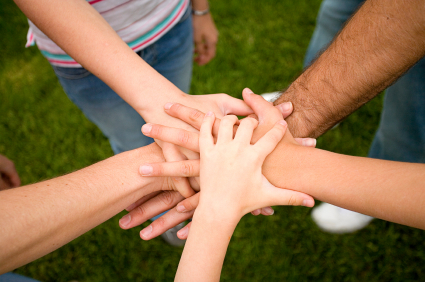 As parents nothing is more frustrating than when your child doesn't try hard enough to accomplish something you know they are perfectly capable of. It is especially worrisome if this behavior continues and starts to become the new norm. After all in today's competitive culture we know that a can-do attitude is essential. So how do we start empowering our children today to give them confidence in their abilities to succeed?
As parents nothing is more frustrating than when your child doesn't try hard enough to accomplish something you know they are perfectly capable of. It is especially worrisome if this behavior continues and starts to become the new norm. After all in today's competitive culture we know that a can-do attitude is essential. So how do we start empowering our children today to give them confidence in their abilities to succeed?The secret lies in goal setting. Goals are essential to progress. They are the benchmarks that give our life a sense of direction, fulfillment and hope for a better tomorrow. Without clearly defined goals it is simply too easy to begin existing from one day to the next. That's why every year our guilty conscience prompts us to make resolutions. We may have success for a month or two, but usually the average adult starts to slide back into habitual routines after that.
As parents we want our children to be even stronger than we are. It's not enough that they do what we tell them or follow the rules because we said so. We need warrior children to see that goals have real value so this trait is internalized and a guiding light when we are no longer around. Our children need to believe in the power of goal setting and adopt a lifestyle of goals for themselves and it's our job to help them do that.
Martial arts in and of itself is a clear demonstration of goal setting, both in a long term and short term sense. Your child is required to work short term to master techniques so that they might achieve more long term goals like a level up or even the coveted Black belt status. Even so we know that it takes more than a bit of mat time practice to make goal setting an integral part of your warrior's character.
In class we talk about the value and importance of goal setting, but truly we are counting on y'all as parents to really bring this message home and make it a part of your every day life. The following article offers some insight on starting this process within your family. Bottom line we hope it encourages you and your warrior to begin modeling a lifestyle of goal setting on and off of the mat.
Lastly we wanted to offer some quick tips to help assure your child's success while you and your warrior set new goals:
- Make sure your warrior has the necessary skills and knowledge to achieve their goal. Kids have very active imaginations and it is up to us to foster their creativity while introducing a little bit of realistic expectations of their current, yet ever changing, abilities.
- Take a look at whose help your warrior needs to achieve this goal. We are the spring board from which children leap from. It is up to us to make sure they have all the support they could possibly need. This requires us to have realistic expectations of our own time and availability during our warrior's new goal path.
- See if your child has enough time to achieve this goal. Make sure the goals you are both setting aren't spreading your warrior too thin. It seems like our children have boundless energy, but when too many things are introduced to their plate too soon we might see a decline in other life areas (i.e. academics) that are also important to their success and future.
- Most of all set some new goals yourself! Our kiddos emulate their heroes and that is us. We can't expect our children to crush goals when we aren't living what we preach. Prevent overwhelm and set yourself up for success by planning out every step required to succeed rather than just a resolution style statement. You'll be amazed at the difference it makes in your whole family's life.










